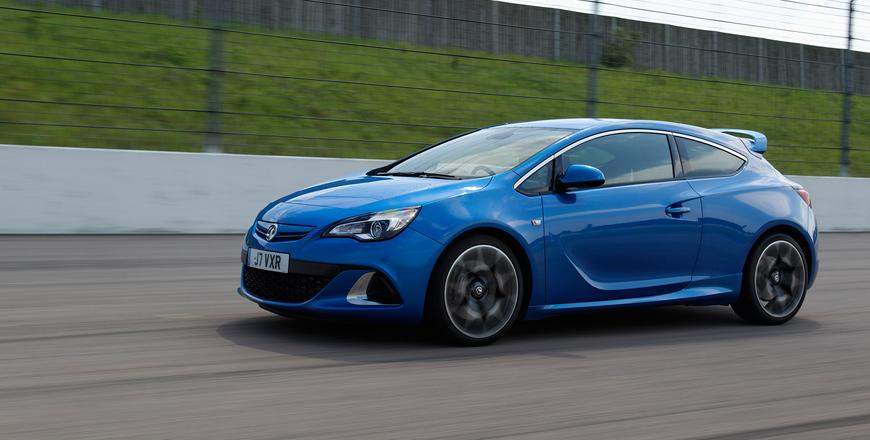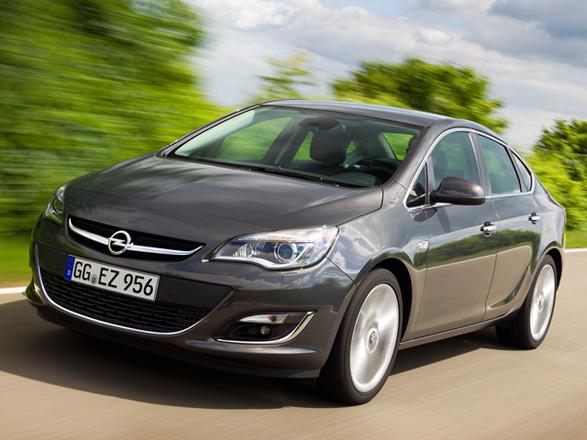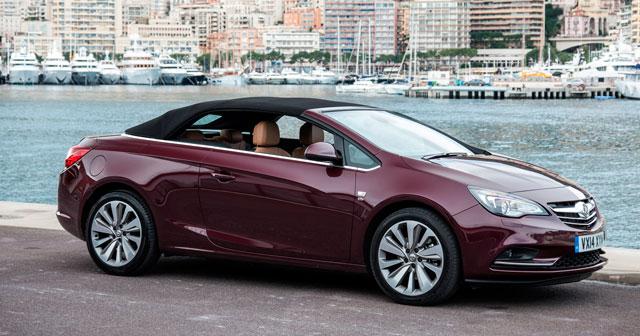You are here
Vauxhall GTC VXR: Epic end of an era
By Ghaith Madadha - Nov 18,2019 - Last updated at Nov 18,2019

Photo courtesy of Vauxhall
A sleek, stylish and brutally quick compact three-door coupe that will go down in history as last great hurrah for Britain’s Vauxhall brand, the GTC VXR was first introduced as part of the previous generation of the C-segment Astra line.
Out-muscling competitors like the Volkswagen Scirocco R and others, the then dubbed Vauxhall Astra VXR dropped the Astra nameplate once the latest generation Astra family hatchback was introduced in 2015. With no new performance Astra on the horizon, it soldiered on virtually unchanged as the GTC VXR, to differentiate and distance it from the less exciting and less glamorous model line.
Soon to be sought after
Having survived the introduction of a new model line, the GTC VXR remained in production until recently, when Vauxhall’s new owners, the French PSA Group finally put Vauxhall’s VXR performance sub-brand freeze, pending future resurrection.
With VXR expected to return at some point utilising some element of electrification and more closely linked to other PSA brands Peugeot and Citroen, the GTC VXR and its German and global market Opel Astra OPC twin are among the last great cars from Vauxhall’s and Opel’s long General Motors era, and well worth the investment whether nearly new or if unclaimed examples remain available.
Arriving in the Middle East only as recently as the 2017 model year in Opel guise, and without sufficient time to truly establish itself, this compact brute, however, always had greater lustre in the British market under the Vauxhall nameplate. Differentiated from the Opel only by its Vauxhall Griffin badge and British market right-hand-drive, as pictured, the GTC VXR otherwise shares the same wide low stance, swooping roofline and dramatic appearance as its German counterpart. Hunkered down, moody, and charismatic, the VXR’s wide gaping lower air intakes, aggressive side skirts, huge rear tailgate wing and chrome-tipped dual exhausts telegraph its performance potential.
Smooth brute
Smooth and sophisticated but with muscular curves and surfacing, broad rear haunches, L-shaped side character line and rakishly low roofline, the muscular GTC VXR’s performance however punches above the rest of the segment, with its 2-litre turbocharged four-cylinder engine developing 276BHP at 5,500rpm and vast 295lb/ft torque across a broad 2500-4500rpm band. Slightly larger and heavier than prime rivals, the Astra VXR’s greater output nevertheless allows for swift 6-second 0-100km/h acceleration and a 250km/h top speed. A lower-revving car than rivals, the VXR rides a rich and generous torque sweet spot, and can return impressive 8.1l/100km combined cycle fuel efficiency.
Smooth and refined in operation, the mighty VXR never sounds rough or stressed, with its huge output channelled to the steered front wheels. To mitigate the torque-steer often associated with powerful front-drive vehicles, the VXR’s MacPherson-type suspension employs a separate HiPerStrut steering axis knuckle. Meanwhile, a limited-slip differential — backed by electronic traction control — diverts power to the wheel best able to use it and to reduce wheel-spin through corners. The result is a sophisticated and refined, but with its electronic nannies off and when launched aggressively, the VXR can still send its tyres momentarily scrambling and clawing before rocketing forwards.
High speed express
With but a moment of turbo lag, the VXR’s quick-spooling turbo spins into action to deliver a volcanic wave of mid-range torque. Seemingly indefatigable and relentlessly bludgeoning, the VXR is effortlessly versatile on inclines and in overtaking at speed. A natural motorway performer, it accumulates speed like a true grand touring coupe. Driving briskly at lower speeds, the VXR quickly works through revs as it reaches maximum power, whereupon needs to quickly shift gears before hitting the rev limiter. Meanwhile, its slightly long yet well-defined gear lever and intuitive clutch pedal and biting point enable one to launch from standstill with ease.
As much a high-speed express as any high-end German autobahn stormer, the VXR is reassuringly planted, with motorway confidence reminiscent of great continent-shrinking large Vauxhalls and Opels of past, like the Monza coupe. Quiet, refined and comfortable, the VXR, however, rides more firmly and has tauter vertical and lateral body lean control. Featuring three damper settings, the VXR is most comfortable in default setting and firmest in VXR mode, with Sport being the best compromise. Wide and squat, the VXR is also confident, precise and reassuring, with high grip levels and the ability to well carry speed through corners.
Hunkered down comfort
Tidy into corners, the VXR’s limited-slip differential ensures it effectively puts power down and turns with poise and agility. Body control is flat and taut in Sport and VXR modes, where other driving parameters also become more focused, but default mode is best for comfort. Meanwhile, steering is precise and light for urban driving, but slightly better feedback would be welcome. Riding on optional Aero Pack 245/35R20 tyres, the VXR is best on smooth roads, but is nevertheless comfortable on the highway. At medium speed the firm low profile tyres absorb imperfections fluidly, but are a bit firm over rough and slow city roads.
While standard 19-inch tyres would have been slightly more forgiving in ride quality, the VXR was, however, roomy and refined inside, and featured wonderfully comfortable, supportive and highly adjustable optional sports seats. Even rear passenger and boot space is comparatively good for such a low roof coupe. However, the VXR’s width, high waistline and thick rear pillars reduce visibility when parking and keep one mindful to not kerb the large alloy wheels. Front visibility is otherwise good and equipment levels generously high, while chrome accents and good quality textures lend the VXR an air of quality and a sporting but business-like character.
TECHNICAL SPECIFICATIONS
Engine: 2-litre, transverse in-line turbocharged 4-cylinders
Bore x stroke: 86 x 86mm
Compression ratio: 9.3:1
Valve-train: 16-valve, DOHC, variable valve timing
Gearbox: 6-speed manual, front-wheel-drive, limited-slip differential
Gear ratios: 1st 3.92:1; 2nd 2.04:1; 3rd 1.37:1; 4th 1.05:1; 5th 0.85:1; 6th 0.74:1
Final drive ratio: 3.9:1
Power, BHP (PS) [kW]: 276 (280) [206] @ 5,500rpm
Specific power: 138BHP/litre
Power-to-weight: 178BHP/tonne
Torque, lb/ft (Nm): 295 (400) @ 2,500-4,500rpm
Specific torque: 200Nm/litre
Torque-to-weight: 271lb/ft/tonne
0-100 km/h: 6-seconds
Top speed: 250km/h
Fuel capacity: 56-litres
Fuel economy, urban/extra-urban/combined: 10.4/7.3/8.1 litres/100km
Fuel requirement: 98RON
CO2 emissions, combined: 189g/km
Length: 4,466mm
Width: 1,840mm
Track, F/R: 1,584/1,588mm
Luggafge volume, min/max: 380/1,165-litres
Kerb weight: 1,475kg
Payload: 495kg
Aerodynamics: CD 0.328
Steering: Electric-hydraulic rack & pinion
Turning radius: 10.9-metres
Suspension, F: HiPerStrut (MacPherson struts with independent steering axis pivot)
Suspension, R: Watt’s link semi-independent
Brakes, F/R: Ventilated discs, 355 x 32mm/315 x 23mm
Tyres: 245/35R20
Related Articles
Introduced in 2015, the Corsa VXR version arrived shortly after the latest incarnation of Britain’s best-selling car model arrived in 2014.
First introduced in 2009 and face-lifted in 2012, the Opel Astra “J” series may have been replaced in European and other markets by a succes
Launched in 2013 as a practical mid-size four-seat convertible with premium car features, feel and qualities yet with attainable price points, the Vauxhall Cascada is essentially based on a lengthened version of the Vauxhall Astra family hatchback and coupe platform.
















